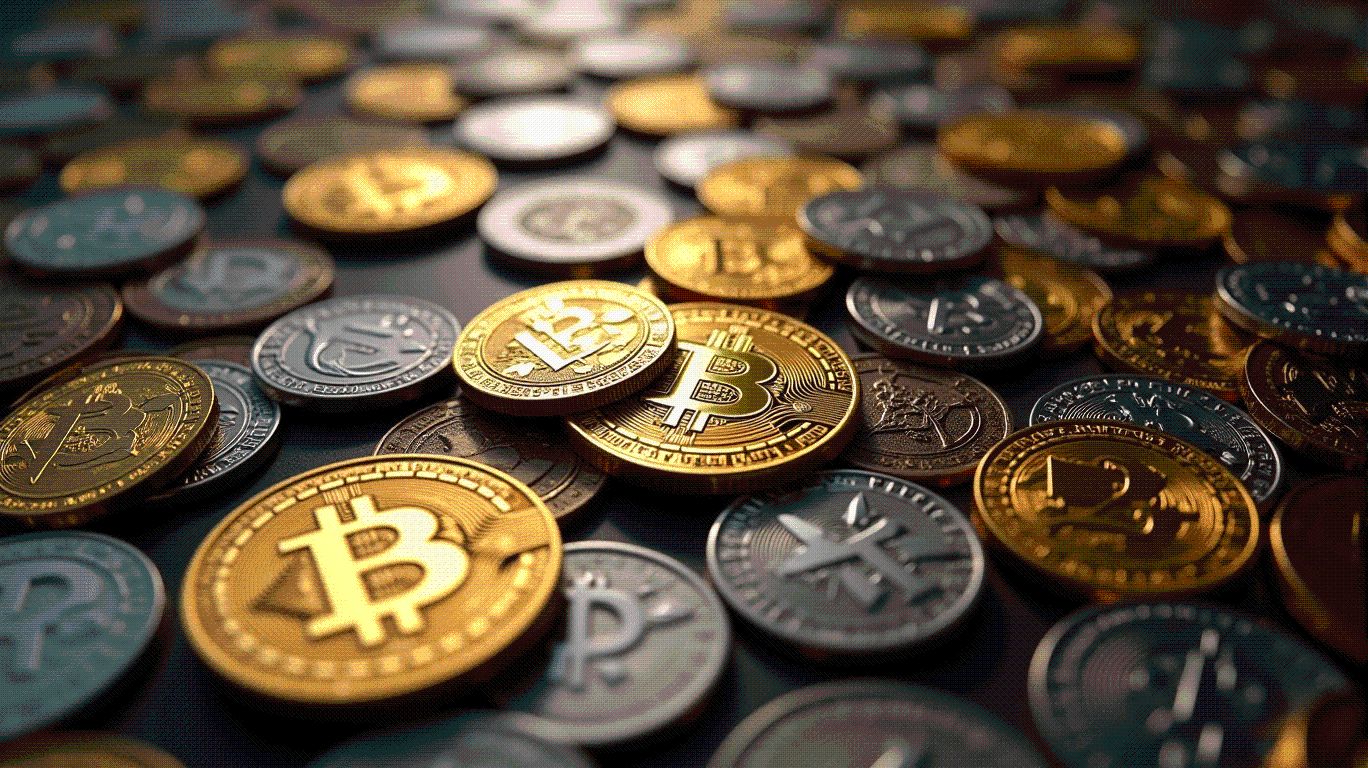Google's GCUL: Redefining Financial Infrastructure and the Battle for Blockchain Supremacy
- Google Cloud's GCUL blockchain targets global financial infrastructure with neutral, compliant, Python-driven architecture. - Platform challenges Ripple, Stripe, and Circle by offering institutional-grade compliance and open-access smart contracts. - GCUL's 30% cost reduction in collateral settlements and token-agnostic design threaten existing fintech players' market share. - 2026 commercial rollout could reshape cross-border payments, stablecoins, and crypto custody markets through institutional adopti
The financial world is on the cusp of a seismic shift. Google Cloud's foray into the Layer 1 (L1) blockchain space with its Google Cloud Universal Ledger (GCUL) is not merely a technological experiment but a strategic gambit to redefine the architecture of global finance. By positioning itself as a neutral, institutional-grade infrastructure layer, Google is challenging the dominance of existing fintech and digital asset players, from Ripple to Stripe, while reshaping the economics of cross-border payments, stablecoins, and tokenization. For investors, this represents both an opportunity and a reckoning.
The GCUL Advantage: Neutrality, Compliance, and Python-Driven Innovation
GCUL's core strengths lie in its design philosophy. Unlike proprietary blockchains such as Stripe's Tempo or Circle's Arc, which are tightly integrated with their parent companies' ecosystems, GCUL is built to be vendor-agnostic. This neutrality is a critical differentiator in an industry where institutions are wary of lock-in risks. Google Cloud's head of Web3 strategy, Rich Widmann, has emphasized that GCUL is a “credibly neutral” platform, designed to serve as a shared infrastructure for any financial institution—from exchanges to custodians—without favoring a single corporate interest.
The platform's Python-based smart contracts further lower the barrier to entry for developers and institutions. Python is already the lingua franca of financial engineering and data science, enabling rapid prototyping of complex financial instruments. This contrasts sharply with the complexity of Solidity or Rust, which dominate other blockchain ecosystems. By leveraging Python, GCUL accelerates the adoption of tokenized assets and programmable finance, making it a compelling alternative for banks and fintechs seeking to modernize their operations.
Institutional-grade compliance is another pillar of GCUL's appeal. The platform integrates KYC/AML checks, real-time fraud detection via Google Cloud AI, and a permissioned architecture that aligns with regulatory frameworks. This is a stark contrast to public blockchains, which often struggle with compliance. For regulators and institutional investors, GCUL offers a solution that balances innovation with accountability—a rare combination in the crypto space.
Disruption on the Horizon: Targeting Key Players
The implications for existing fintech and digital asset players are profound.
Ripple and Cross-Border Payments
Ripple's XRP Ledger has long dominated the remittance market with its speed and low cost. However, GCUL's 24/7 settlement capabilities and institutional-grade compliance could erode Ripple's market share. GCUL's pilot with CME Group has already demonstrated a 30% reduction in collateral settlement costs, a metric that could attract banks and exchanges seeking to cut operational expenses. For Ripple, the challenge lies in its token-centric model, which faces regulatory scrutiny. GCUL's token-agnostic approach offers a safer, more scalable alternative.Stripe and Circle: The Proprietary vs. Neutral Divide
Stripe's Tempo and Circle's Arc are both corporate blockchains designed to streamline payments and stablecoin transactions. Yet their proprietary nature limits institutional flexibility. GCUL's open-access model allows any institution to deploy smart contracts without being tied to a competitor's ecosystem. This neutrality is a significant advantage in a market where trust and interoperability are paramount. For example, Tether and Adyen, which have historically avoided each other's platforms due to competitive tensions, could find common ground in GCUL's neutral infrastructure.Cloud Providers and ETFs: The Infrastructure Play
GCUL's scalability and integration with Google Cloud's global infrastructure also position it to disrupt cloud providers like AWS and Microsoft Azure. If GCUL expands beyond Google's internal systems, it could create demand for third-party compute and storage resources, benefiting these cloud giants. Meanwhile, blockchain-focused ETFs such as BLOK and IBIT may see increased inflows as institutional adoption of GCUL accelerates.
Strategic Risks and the Road to 2026
Despite its promise, GCUL is not without risks. Regulatory uncertainty, particularly around stablecoins and cross-border settlements, could delay adoption. Additionally, competition from entrenched players remains fierce. Ripple's dominance in remittances, Stripe's merchant network, and Circle's early-stage Arc blockchain all pose challenges. However, GCUL's institutional-grade compliance and strategic partnerships—such as its collaboration with CME Group—provide a unique edge.
The platform's full commercial rollout in 2026 will be a critical test. If GCUL successfully scales to billions of users and hundreds of institutions, it could become the backbone of a new financial ecosystem. For investors, this means positioning in companies that stand to benefit from GCUL's growth:
- Cloud Infrastructure Providers: AWS and Microsoft Azure could see increased demand if GCUL requires external compute resources.
- Blockchain ETFs: BLOK and IBIT may outperform as institutional adoption of GCUL drives broader market interest.
- Crypto Custodians: Firms like Fireblocks and BitGo could gain traction as institutions seek secure, compliant solutions for tokenized assets.
Conclusion: A New Era of Financial Infrastructure
Google's entry into the L1 blockchain space marks a pivotal moment in the evolution of financial infrastructure. By combining Python-based smart contracts, institutional-grade compliance, and a neutral platform, GCUL is poised to disrupt cross-border payments, stablecoins, and tokenization. For investors, the key is to identify the winners and losers in this transition. Those who bet on GCUL's ecosystem—whether through cloud providers, ETFs, or institutional custodians—stand to reap significant rewards as the world moves toward a more programmable, efficient, and compliant financial system.
The battle for blockchain supremacy is far from over, but Google has just thrown its weight into the ring. The question is no longer whether GCUL will succeed—it's how quickly it will reshape the landscape.
Disclaimer: The content of this article solely reflects the author's opinion and does not represent the platform in any capacity. This article is not intended to serve as a reference for making investment decisions.
You may also like
YGG +193.75% 24H Due to Volatile Market Dynamics
- YGG surged 193.75% in 24 hours to $0.1572 on Aug 28, 2025, amid volatile market dynamics. - This followed a 561.34% 7-day drop, highlighting extreme short-term investor sentiment shifts. - A 660.13% monthly gain contrasts with a 6672.11% annual decline, underscoring unstable market conditions. - The rebound lacks clear fundamentals, raising doubts about sustainability amid broader bearish trends.

Bitcoin's Weakening Momentum and the Looming Correction: A Cautionary Tale for Crypto Investors
- Bitcoin faces triple threats: deteriorating technical indicators, Fed liquidity withdrawal, and bearish options positioning trigger correction risks. - MACD divergence and RSI weakness signal momentum exhaustion, while $14.6B in BTC puts highlight market capitulation fears. - Gamma pressure intensifies near $111K, with 20% drop in perpetual futures open interest and ETF outflows from BlackRock/Fidelity. - Strategic hedging (puts/futures) and position reduction urged as liquidity shocks expose crypto mark

Ethereum's Structural Outperformance Over Bitcoin in the Institutional ETF Era
- Ethereum dominates institutional ETFs in 2025 due to regulatory clarity, yield innovation, and infrastructure utility. - The GENIUS and CLARITY Acts reclassified Ethereum as a utility token, enabling SEC-compliant staking yields (3-5%) absent in Bitcoin's PoW model. - Ethereum ETFs attracted $9.4B in Q2 2025 vs. $552M for Bitcoin ETFs, driven by capital efficiency and deflationary supply dynamics. - Over 19 public companies now stake Ethereum for compounding returns, cementing its role as infrastructure

Stablecoins as the New Backbone of Global Payments: The USDC Cross-Border Revolution
- Circle and Finastra integrate USDC stablecoin into GPP platform, merging blockchain speed with traditional banking systems for cross-border payments. - The hybrid model reduces settlement times by 90% and costs by 40%, bypassing correspondent banking delays while maintaining SWIFT/ISO 20022 compatibility. - USDC's $65B circulation and regulatory backing (GENIUS Act, MiCA) drive institutional adoption, with Circle's IPO valuation surging 450% amid stablecoin market growth projections. - Risks include regu
